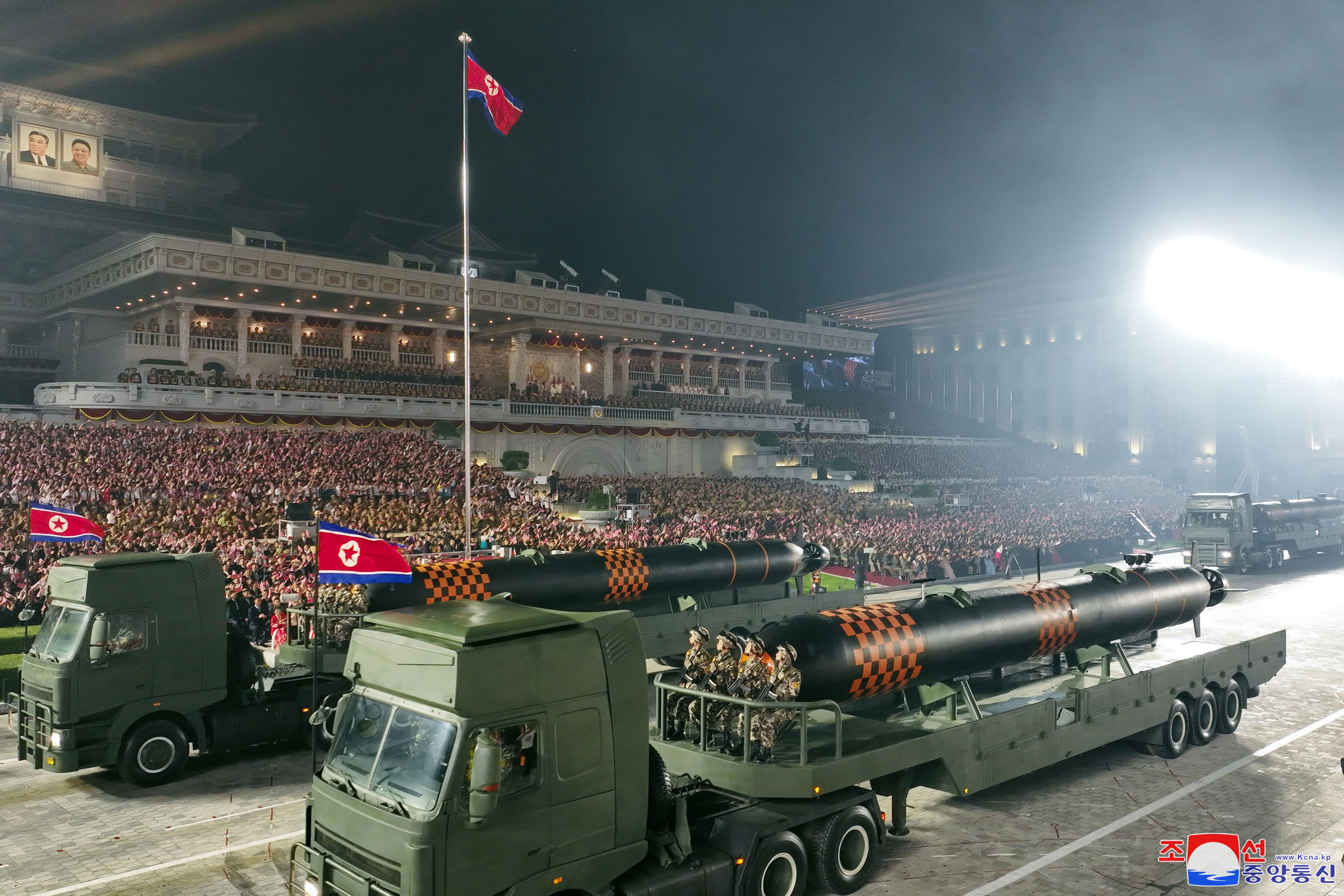
North Korea carried out a test of its Haeil-5-23 underwater nuclear weapon system in the Sea of Japan in response to trilateral naval drills conducted by the U.S., Japan and South Korea in the East China Sea, North Korea’s Defense Ministry said on Friday.
“We will never tolerate the reckless military confrontation hysteria,” a ministry spokesman told the Korean Central News Agency. The spokesman said the test of the system that could carry a nuclear warhead was a reaction following the establishment of a tripartite multiyear drill plan by the U.S., Japan and South Korea that he claims threatens the security of North Korea.
According to the statement, “underwater responsive actions will continue to deter the hostile military maneuvers of the navies of the U.S. and its allies.”
From Monday to Wednesday, the Carl Vinson Carrier Strike Group, comprising of carrier USS Carl Vinson (CVN-70) with embarked Carrier Air Wing (CVW) 2, cruiser USS Princeton (CG-59) and destroyers USS Kidd (DDG-100) and USS Sterett (DDG-104), carried out a three-day drill in the East China Sea with Japan Maritime Self-Defense Force helicopter destroyer JS Hyuga (DDH-181) and destroyer JS Kongo (DDG-173) and Republic of Korea Navy destroyers ROKS Sejong the Great (DDG-991) and ROKS Wang Geon (DDH-978). The three countries agreed in December to formalize a multiyear schedule of trilateral military drills to deter North Korea. The Monday to Wednesday drill marked the first under the agreement.
North Korea announced the Haeil unmanned underwater vessel (UUV) in March last year and released photos in April of a “Haeil-2” UUV. North Korea claims the UUV is able to carry a nuclear warhead and is capable of infiltrating operation areas and destroying naval strike groups and enemy ports.
South Korea’s Ministry of National Defense issued a short statement in response to the test, saying that North Korea’s recent behavior is a violation of U.N. Security Council resolutions and a clear provocation that threatens peace on the Korean Peninsula and the world. “We issue a stern warning and strongly urge it to stop immediately,” read the release, which concluded by saying that the South Korean military is thoroughly prepared for North Korea’s provocations under the South Korea-U.S. joint defense posture, and will “respond overwhelmingly” to a direct provocation.
U.S. Ambassador to Japan Rahm Emanuel on Friday announced the launch of the Ship Repair Council Japan, which will tie together the U.S. and Japan defense industries and take advantage of Japan’s shipbuilding and repair expertise.
The U.S. ambassador made the announcement while during a visit to Yokosuka Naval Base According to Stripes, Emanuel stated that the Navy plans to send some of its ships to Japanese shipyards for maintenance to reduce the time it takes them to return to service, and that the Navy is already doing practice run with the Sasebo based amphibious transport dock USS New Orleans (LPD-18) at an unspecified Japanese shipyard.
Currently, U.S ships based in Japan only conduct minor maintenance and repair with Japanese shipyards, with some major works carried out within the Sasebo and Yokosuka bases, such as the repair of USS John S. McCain (DDG-56) following a collision off Singapore in 2017. Emanuel has been pushing for the U.S. to allow major repairs on Japan-based ships to be done in the country rather than sending them back to the United States, arguing that it would ease the ongoing ship repair and maintenance backlog in U.S. shipyards. In October last year, he penned an op-ed in The Wall Street Journal, saying that given Japanese shipyards already do work for Military Sealift Command, there was no reason for not doing so for combat ships as well. “We have the equivalent of 12 warships a year offline waiting for overhaul that could be in the fleet deterring conflict if we serviced them in Japan,” wrote the U.S. ambassador. “We, our allies, and our deterrence cannot afford to have our ships sitting idly in dry dock as threats grow.”





